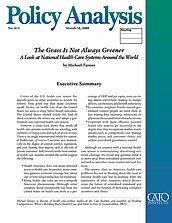However, a closer look shows that nearly all health care systems worldwide are wrestling with problems of rising costs and lack of access to care. There is no single international model for national health care, of course. Countries vary dramatically in the degree of central control, regulation, and cost sharing they impose, and in the role of private insurance. Still, overall trends from national health care systems around the world suggest the following:
- Health insurance does not mean universal access to health care. In practice, many countries promise universal coverage but ration care or have long waiting lists for treatment.
- Rising health care costs are not a uniquely American phenomenon. Although other countries spend considerably less than the United States on health care, both as a percentage of GDP and per capita, costs are rising almost everywhere, leading to budget deficits, tax increases, and benefit reductions.
- In countries weighted heavily toward government control, people are most likely to face waiting lists, rationing, restrictions on physician choice, and other obstacles to care.
- Countries with more effective national health care systems are successful to the degree that they incorporate market mechanisms such as competition, cost sharing, market prices, and consumer choice, and eschew centralized government control.
Although no country with a national health care system is contemplating abandoning universal coverage, the broad and growing trend is to move away from centralized government control and to introduce more market-oriented features.
The answer then to America’s health care problems lies not in heading down the road to national health care but in learning from the experiences of other countries, which demonstrate the failure of centralized command and control and the benefits of increasing consumer incentives and choice.


